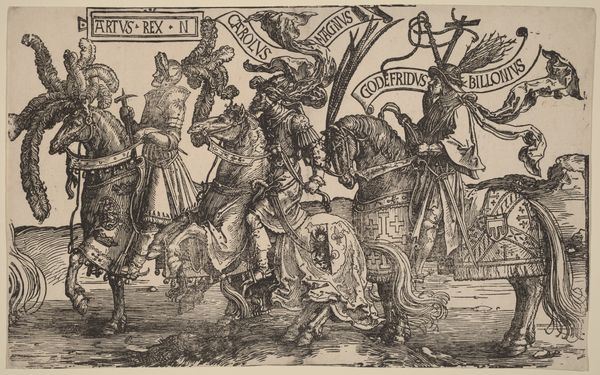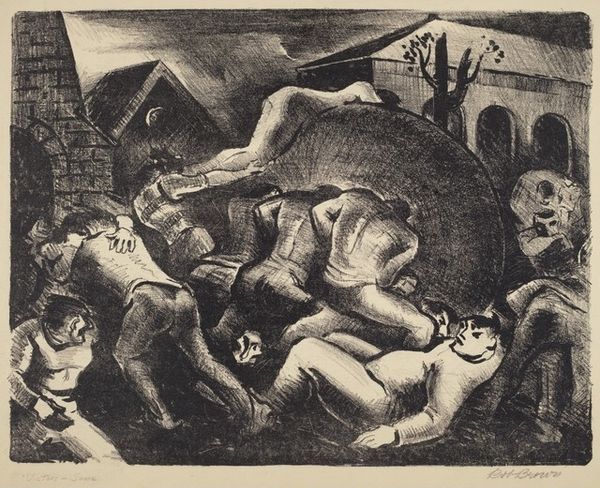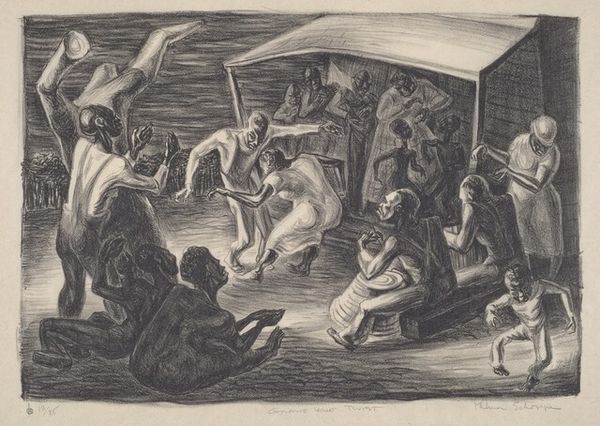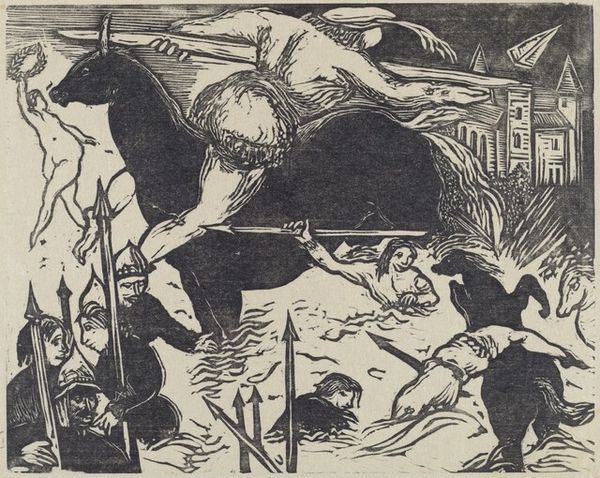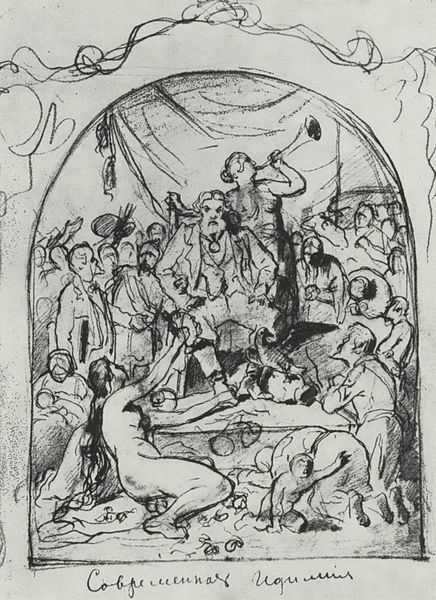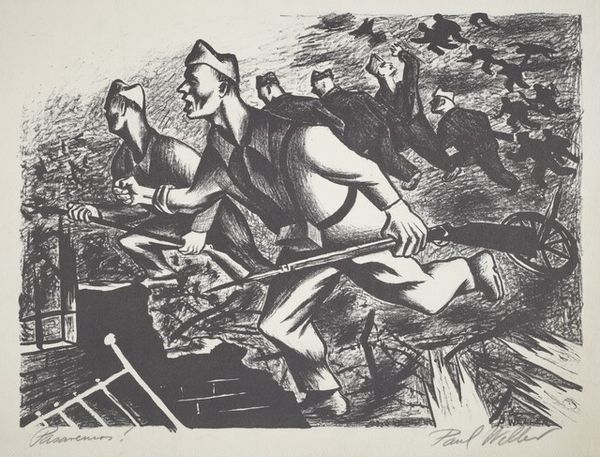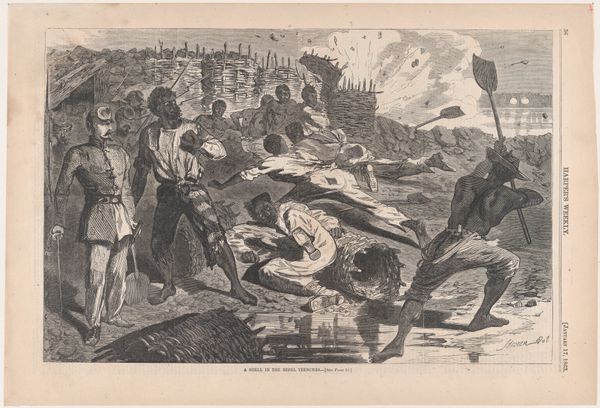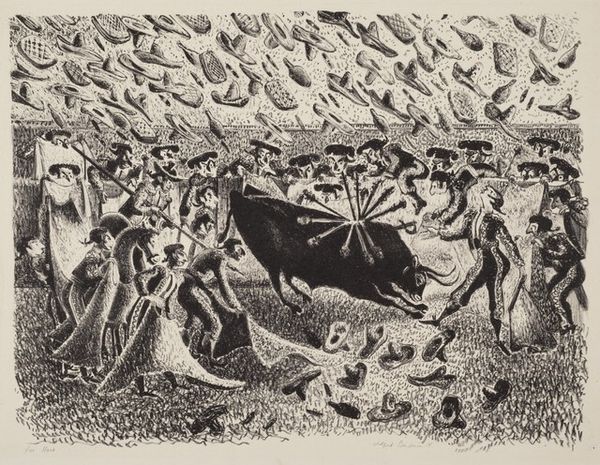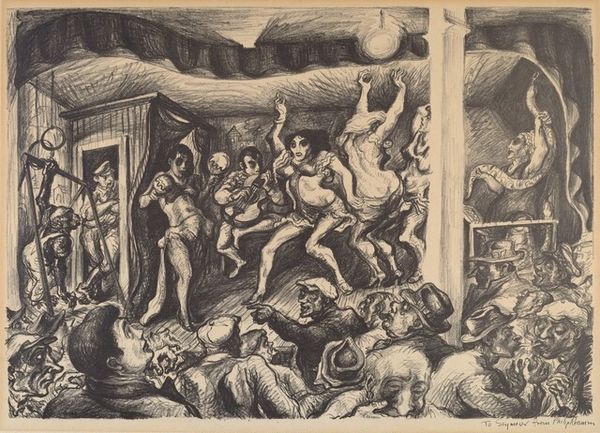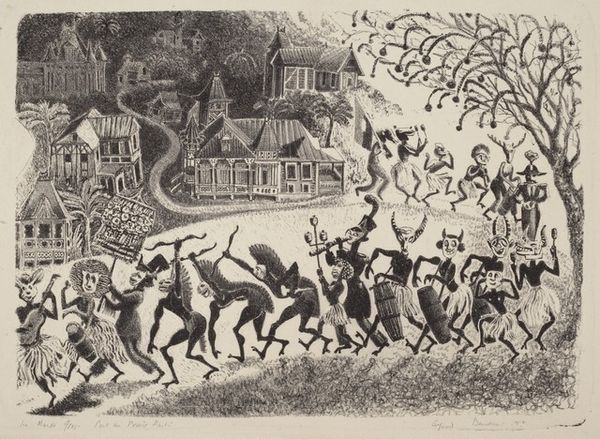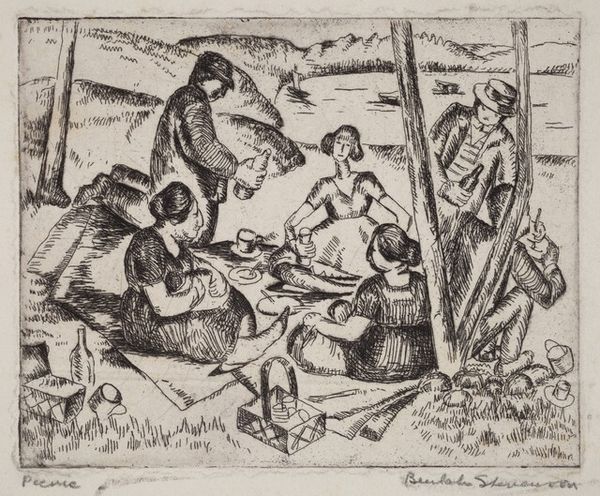
drawing, print, etching, ink
#
drawing
#
ink drawing
# print
#
pen illustration
#
pen sketch
#
etching
#
figuration
#
ink
#
history-painting
Copyright: National Gallery of Art: CC0 1.0
Editor: This is Bernard Reder's "Gargantua: Chapter XXV" from 1942, done using ink and etching. It looks incredibly chaotic, full of tumbling figures and ruined buildings. How do you interpret this work, with its crowded composition and rather frantic energy? Curator: The chaos you see is, to me, deliberate and evocative. It's pulling from Rabelais’s novel, using imagery to build emotional associations and convey cultural memory. Consider the checkered flag - does it signal victory, or perhaps a more ambivalent commentary on the nature of conflict? Editor: That's a great point about the flag, I hadn't considered that! What about the lone rider, dominating the scene? What is he a symbol of? Curator: Observe his placement; towering over the disarray, armed but also vulnerable. Does he represent the individual's struggle against overwhelming forces? Or maybe even the artist's wrestling with the very narrative itself? Editor: He does seem a bit detached from the carnage below, almost observing rather than participating. Curator: Precisely. And what about the winged figure at the far left, emerging from the sea? Editor: It is definitely an interesting image, its whiteness makes me focus on it as something of a pure presence. Curator: Do you see how the visual cacophony serves to reinforce this character, seemingly of innocence and purity? By inverting conventional heroic iconography, it emphasizes the destructive forces in play and subtly highlights a glimmer of hope amidst it. Editor: It’s like Reder's playing with our expectations, using these historical symbols to make us question what they really mean. Curator: Exactly. This isn't just an illustration of a historical moment; it's a deeply psychological exploration of power, destruction, and the faint possibility of redemption. Editor: That makes me look at it in a totally different way! The cultural context is much more dense than it appeared initially, almost deceptively so. Curator: Indeed, by dissecting these visual symbols, we begin to uncover layers of meaning within Reder's powerful etching, which gives more weight and nuance to the work.
Comments
No comments
Be the first to comment and join the conversation on the ultimate creative platform.
